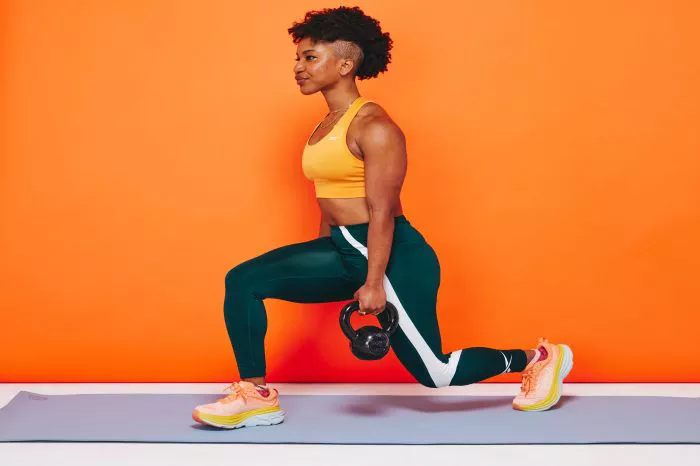Sculpting your buttocks, also known as your glutes, is a common fitness goal for many people seeking to achieve a toned and shapely lower body. Strong and well-defined glutes not only enhance your appearance but also contribute to better posture, improved athletic performance, and reduced risk of injury. In this article, we’ll explore a comprehensive guide on how to sculpt your buttocks through targeted exercises, proper nutrition, and lifestyle habits.
1. Understand Your Glute Anatomy:
Before diving into specific exercises and workouts, it’s essential to understand the anatomy of your glutes. The gluteal muscles consist of three main muscles: the gluteus maximus, gluteus medius, and gluteus minimus. The gluteus maximus is the largest and most powerful muscle in the buttocks, responsible for hip extension, thigh abduction, and thigh external rotation. The gluteus medius and minimus are smaller muscles located on the outer side of the hip, responsible for hip abduction and stabilization.
2. Incorporate Compound Exercises:
Compound exercises, which involve multiple muscle groups and joints, are highly effective for sculpting the buttocks as they engage the glutes along with other lower body muscles. Some of the best compound exercises for targeting the glutes include:
- Squats: Squats are a fundamental lower body exercise that targets the glutes, quadriceps, hamstrings, and core muscles. To maximize glute activation, focus on squatting to parallel or below parallel and driving through the heels as you rise.
- Lunges: Lunges are another excellent exercise for sculpting the buttocks, particularly the gluteus maximus. Forward lunges, reverse lunges, and walking lunges all target the glutes while also engaging the quadriceps, hamstrings, and calves.
- Deadlifts: Deadlifts are a compound exercise that primarily targets the glutes, hamstrings, and lower back. Conventional deadlifts, sumo deadlifts, and Romanian deadlifts are all effective variations for sculpting the buttocks.
- Hip Thrusts: Hip thrusts are a highly effective isolation exercise for targeting the glutes. To perform hip thrusts, sit on the ground with your upper back resting against a bench or elevated surface, place a barbell or weight across your hips, and drive through your heels to lift your hips toward the ceiling.
3. Include Isolation Exercises:
In addition to compound exercises, incorporating isolation exercises can help target specific areas of the glutes and enhance muscle definition. Some effective isolation exercises for sculpting the buttocks include:
- Glute Bridges: Glute bridges are a simple yet effective exercise for targeting the glutes and hamstrings. Lie on your back with your knees bent and feet flat on the ground, then lift your hips toward the ceiling while squeezing your glutes at the top of the movement.
- Donkey Kicks: Donkey kicks are a great isolation exercise for targeting the gluteus maximus. Start on your hands and knees, then lift one leg upward while keeping your knee bent and foot flexed. Squeeze your glutes at the top of the movement before returning to the starting position.
- Fire Hydrants: Fire hydrants target the gluteus medius and minimus, helping to sculpt the outer portion of the buttocks. Begin on your hands and knees, then lift one leg outward to the side while keeping your knee bent. Focus on contracting your glutes throughout the movement.
4. Train with Resistance:
To effectively sculpt your buttocks, it’s essential to challenge your muscles with resistance. Whether you’re using body weight, resistance bands, dumbbells, or barbells, incorporating resistance into your workouts can help stimulate muscle growth and increase muscle definition in the glutes.
5. Focus on Progressive Overload:
Progressive overload is a principle of strength training that involves gradually increasing the intensity, volume, or resistance of your workouts over time. By progressively overloading your muscles, you can stimulate muscle growth and adaptation, leading to greater strength and muscle definition in the buttocks.
6. Prioritize Proper Form:
Maintaining proper form is crucial for maximizing the effectiveness of your glute workouts and reducing the risk of injury. Focus on performing each exercise with controlled movements and a full range of motion, avoiding momentum or jerky movements that can compromise form and target other muscle groups.
7. Ensure Adequate Recovery:
Rest and recovery are essential components of any fitness program, allowing your muscles to repair and grow stronger between workouts. Aim for at least 48 hours of rest between intense glute workouts to allow for optimal recovery and muscle adaptation.
8. Maintain a Balanced Diet:
Nutrition plays a significant role in sculpting your buttocks, as it provides the fuel and nutrients needed for muscle growth and recovery. Aim to consume a balanced diet rich in lean proteins, complex carbohydrates, healthy fats, and plenty of fruits and vegetables to support your fitness goals.
9. Stay Hydrated:
Staying hydrated is crucial for overall health and performance, including muscle function and recovery. Aim to drink plenty of water throughout the day, especially before, during, and after your workouts, to stay hydrated and support optimal muscle function.
10. Get Adequate Sleep:
Sleep is essential for muscle recovery, repair, and growth, making it crucial for achieving your buttock-sculpting goals. Aim for 7-9 hours of quality sleep per night to support optimal recovery and muscle adaptation.
Conclusion:
Sculpting your buttocks requires a combination of targeted exercises, proper nutrition, and lifestyle habits. By incorporating compound and isolation exercises, training with resistance, focusing on progressive overload, prioritizing proper form, ensuring adequate recovery, maintaining a balanced diet, staying hydrated, getting adequate sleep, you can effectively sculpt and tone your buttocks for a stronger, shapelier lower body. Remember to listen to your body, be patient, and stay consistent with your workouts and healthy habits to achieve your desired results.
Related Topics:
How Protect Your Backbone During Sit-ups?


